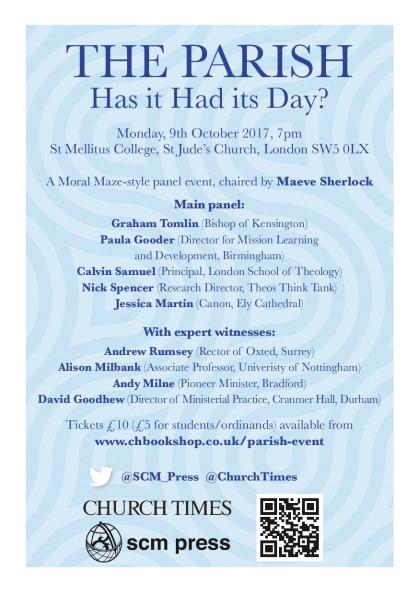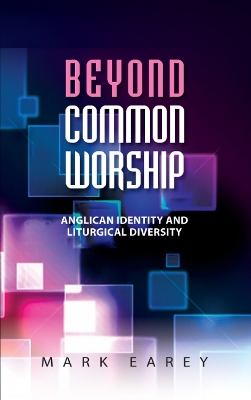


 Amongst the titles in our summer sale this year are a number from the The SCM Theological Commentaries on the Bible series. The commentaries enlist leading theologians to read and interpret Scripture for the twenty-first century, just as the church fathers, the Reformers, and other orthodox Christians did for their times and places.
Amongst the titles in our summer sale this year are a number from the The SCM Theological Commentaries on the Bible series. The commentaries enlist leading theologians to read and interpret Scripture for the twenty-first century, just as the church fathers, the Reformers, and other orthodox Christians did for their times and places.
Here’s an introduction to the series, by the general editor R.R. Reno.
Near the beginning of his treatise against Gnostic interpretations of the Bible, Against the Heresies, Irenaeus observes that Scripture is like a great mosaic depicting a handsome king. It is as if we were owners of a villa in Gaul who had ordered a mosaic from Rome. It arrives, and the beautifully colored tiles need to be taken out of their packaging and put into proper order according to the plan of the artist. The difficulty, of course, is that Scripture provides us with the individual pieces, but the order and sequence of various elements are not obvious. The Bible does not come with instructions that would allow interpreters to simply place verses, episodes, images, and parables in order as a worker might follow a schematic drawing in assembling the pieces to depict the handsome king. The mosaic must be puzzled out. This is precisely the work of scriptural interpretation.
Origen has his own image to express the difficulty of working out the proper approach to reading the Bible. When preparing to offer a commentary on the Psalms he tells of a tradition handed down to him by his Hebrew teacher:
The Hebrew said that the whole divinely inspired Scripture may be likened, because of its obscurity, to many locked rooms in our house. By each room is placed a key, but not the one that corresponds to it, so that the keys are scattered about beside the rooms, none of them matching the room by which it is placed. It is a difficult task to find the keys and match them to the rooms that they can open. We therefore know the Scriptures that are obscure only by taking the points of departure for understanding them from another place because they have their interpretive principle scattered among them.
As is the case for Irenaeus, scriptural interpretation is not purely local. The key in Genesis may best fit the door of Isaiah, which in turn opens up the meaning of Matthew. The mosaic must be put together with an eye toward the overall plan. Irenaeus, Origen, and the great cloud of premodern biblical interpreters assumed that puzzling out the mosaic of Scripture must be a communal project. The Bible is vast, heterogeneous, full of confusing passages and obscure words, and difficult to understand. Only a fool would imagine that he or she could work out solutions alone. The way forward must rely upon a tradition of reading that Irenaeus reports has been passed on as the rule or canon of truth that functions as a confession of faith. “Anyone,” he says, “who keeps unchangeable in himself the rule of truth received through baptism will recognize the names and sayings and parables of the scriptures.” Modern scholars debate the content of the rule on which Irenaeus relies and commends, not the least because the terms and formulations Irenaeus himself uses shift and slide. Nonetheless, Irenaeus assumes that there is a body of apostolic doctrine sustained by a tradition of teaching in the church. This doctrine provides the clarifying principles that guide exegetical judgment toward a coherent overall reading of Scripture as a unified witness. Doctrine, then, is the schematic drawing that will allow the reader to organize the vast heterogeneity of the words, images, and stories of the Bible into a readable, coherent whole. It is the rule that guides us toward the proper matching of keys to doors.
If self-consciousness about the role of history in shaping human consciousness makes modern historical-critical study critical, then what makes modern study of the Bible modern is the consensus that classical Christian doctrine distorts interpretive understanding. Benjamin Jowett, the influential nineteenth-century English classical scholar, is representative. In his programmatic essay “On the Interpretation of Scripture,” he exhorts the biblical reader to disengage from doctrine and break its hold over the interpretive imagination. “The simple words of that book,” writes Jowett of the modern reader, “he tries to preserve absolutely pure from the refinements or distinctions of later times.” The modern interpreter wishes to “clear away the remains of dogmas, systems, controversies, which are encrusted upon” the words of Scripture. The disciplines of close philological analysis “would enable us to separate the elements of doctrine and tradition with which the meaning of Scripture is encumbered in our own day.” The lens of understanding must be wiped clear of the hazy and distorting film of doctrine.
Postmodernity, in turn, has encouraged us to criticize the critics. Jowett imagined that when he wiped away doctrine he would encounter the biblical text in its purity and uncover what he called “the original spirit and intention of the authors.” We are not now so sanguine, and the postmodern mind thinks interpretive frameworks inevitable. Nonetheless, we tend to remain modern in at least one sense. We read Athanasius and think him stage-managing the diversity of Scripture to support his positions against the Arians. We read Bernard of Clairvaux and assume that his monastic ideals structure his reading of the Song of Songs. In the wake of the Reformation, we can see how the doctrinal divisions of the time shaped biblical interpretation. Luther famously described the Epistle of James as a “strawy letter,” for, as he said, “it has nothing of the nature of the Gospel about it.” In these and many other instances, often written in the heat of ecclesiastical controversy or out of the passion of ascetic commitment, we tend to think Jowett correct: doctrine is a distorting film on the lens of understanding.
However, is what we commonly think actually the case? Are readers naturally perceptive? Do we have an unblemished, reliable aptitude for the divine? Have we no need for disciplines of vision? Do our attention and judgment need to be trained, especially as we seek to read Scripture as the living word of God? According to Augustine, we all struggle to journey toward God, who is our rest and peace. Yet our vision is darkened and the fetters of worldly habit corrupt our judgment. We need training and instruction in order to cleanse our minds so that we might find our way toward God. To this end, “the whole temporal dispensation was made by divine Providence for our salvation.” The covenant with Israel, the coming of Christ, the gathering of the nations into the church—all these things are gathered up into the rule of faith, and they guide the vision and form of the soul toward the end of fellowship with God. In Augustine’s view, the reading of Scripture both contributes to and benefits from this divine pedagogy. With countless variations in both exegetical conclusions and theological frameworks, the same pedagogy of a doctrinally ruled reading of Scripture characterizes the broad sweep of the Christian tradition from Gregory the Great through Bernard and Bonaventure, continuing across Reformation differences in both John Calvin and Cornelius Lapide, Patrick Henry and Bishop Bossuet, and on to more recent figures such as Karl Barth and Hans Urs von Balthasar.
Is doctrine, then, not a moldering scrim of antique prejudice obscuring the Bible, but instead a clarifying agent, an enduring tradition of theological judgments that amplifies the living voice of Scripture? And what of the scholarly dispassion advocated by Jowett? Is a noncommitted reading, an interpretation unprejudiced, the way toward objectivity, or does it simply invite the languid intellectual apathy that stands aside to make room for the false truism and easy answers of the age?
This series of biblical commentaries was born out of the conviction that dogma clarifies rather than obscures. It advances upon the assumption that the Nicene tradition, in all its diversity and controversy, provides the proper basis for the interpretation of the Bible as Christian Scripture. God the Father Almighty, who sends his only begotten Son to die for us and for our salvation and who raises the crucified Son in the power of the Holy Spirit so that the baptized may be joined in one body—faith in this God with this vocation of love for the world is the lens through which to view the heterogeneity and particularity of the biblical texts. Doctrine, then, is not a moldering scrim of antique prejudice obscuring the meaning of the Bible. It is a crucial aspect of the divine pedagogy, a clarifying agent for our minds fogged by self-deceptions, a challenge to our languid intellectual apathy that will too often rest in false truisms and the easy spiritual nostrums of the present age rather than search more deeply and widely for the dispersed keys to the many doors of Scripture.
As part of our Summer Sale, selected titles in the SCM Theological Commentary on the Bible series are now available at £5 (usual RRP is £19.99). See our website for more information
 As part of our series in the run-up to our event on 9th October – “
As part of our series in the run-up to our event on 9th October – “ Where’s this summer going to? Somehow, we’re now halfway through August, which means it’s only a few more days until
Where’s this summer going to? Somehow, we’re now halfway through August, which means it’s only a few more days until  If you follow this blog regularly, it won’t have escaped your notice that we published Andrew Rumsey’s new book
If you follow this blog regularly, it won’t have escaped your notice that we published Andrew Rumsey’s new book  sustainable long term solution for the world’s poor.
sustainable long term solution for the world’s poor. In the run up to our Moral Maze-style panel event
In the run up to our Moral Maze-style panel event 